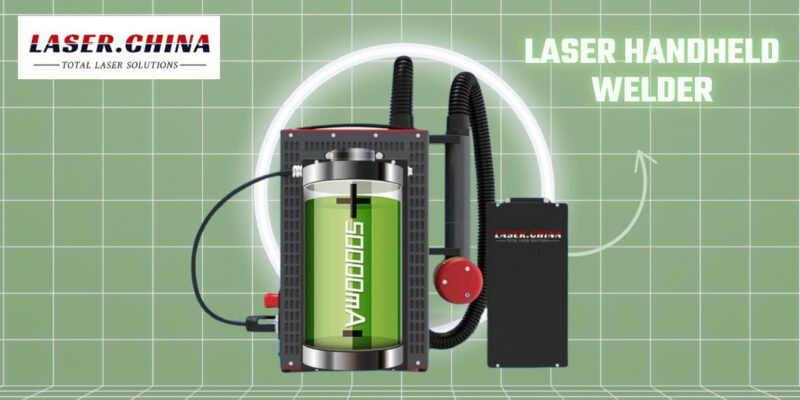A fiber welder, often referred to as a fiber laser welder, is an advanced welding tool that uses fiber laser technology to join metals with high precision and efficiency. Unlike traditional welding techniques, fiber welding harnesses the power of laser light to create clean, strong, and visually appealing welds. This innovative tool has gained significant attention across industries due to its numerous advantages, including speed, precision, and versatility. Here’s a detailed overview of what a fiber welder is and why it is considered revolutionary in the world of welding.
1. What is a Fiber Welder?
A fiber welder is a machine that uses a fiber laser source to emit a concentrated beam of light for welding applications. The fiber laser beam is highly focused, enabling it to melt and fuse materials with pinpoint accuracy. Fiber welders are particularly effective for joining metals such as stainless steel, aluminum, copper, titanium, and carbon steel. They are commonly used in industries where precision and speed are critical, such as automotive, aerospace, electronics, and medical device manufacturing.
Fiber welders are available in different configurations, including handheld models for portability and robotic systems for automated production lines. The flexibility of these machines makes them suitable for both large-scale industrial applications and small-scale projects.
2. Key Features and Advantages of Fiber Welders
a) High Precision
One of the standout features of fiber welders is their ability to create highly precise welds. The laser beam can be controlled with incredible accuracy, making it ideal for intricate designs, delicate parts, and thin materials. This precision minimizes the risk of material distortion or damage.
b) Clean and Aesthetic Welds
Fiber welders produce welds that are clean, smooth, and visually appealing. Unlike traditional welding methods that may leave behind spatter or require extensive post-weld grinding, fiber welding often eliminates the need for additional finishing work.
c) Speed and Efficiency
Fiber welders operate at much higher speeds compared to traditional welding methods like MIG or TIG welding. This speed reduces production time, increases throughput, and lowers labor costs.
d) Minimal Heat Input
The concentrated nature of the laser beam ensures minimal heat input, reducing the heat-affected zone (HAZ). This makes fiber welding suitable for materials that are sensitive to heat or prone to warping.
e) Versatility
Fiber welders can handle a wide range of materials and thicknesses, making them highly versatile. They are also compatible with various welding techniques, including butt welding, lap welding, and fillet welding.
f) Eco-Friendly
Fiber welding is an environmentally friendly process. It does not require consumables like electrodes or filler wires, and it eliminates the need for chemicals used in traditional cleaning methods.
3. Applications of Fiber Welders
Fiber welders are used in a variety of industries due to their versatility and precision:
- Automotive: For welding components like car frames, exhaust systems, and batteries in electric vehicles.
- Aerospace: For creating lightweight, durable welds in aircraft parts.
- Electronics: For welding delicate components in smartphones, tablets, and microchips.
- Medical Devices: For joining stainless steel or titanium components in surgical instruments and implants.
- Jewelry: For repairing or creating intricate jewelry designs.
4. Comparison with Traditional Welding Methods
Fiber Welding vs. MIG/TIG Welding
- Speed: Fiber welders are significantly faster, reducing project timelines.
- Precision: TIG welding is known for its precision, but fiber welding surpasses it due to its laser control.
- Post-Weld Cleanup: Fiber welding produces cleaner welds, eliminating the need for grinding or polishing.
Fiber Welding vs. Arc Welding
- Fiber welders offer superior control and are more energy-efficient than arc welding.
- Arc welding is more affordable initially but incurs higher long-term costs due to consumables and slower operation.
5. Challenges and Considerations
While fiber welders offer numerous benefits, there are a few challenges to consider:
- High Initial Cost: Fiber welders have a higher upfront cost compared to traditional welders. However, the long-term savings in labor, materials, and energy often outweigh this investment.
- Skill Requirement: Operators may need training to use fiber welders effectively, especially for complex tasks.
Conclusion
Fiber welders represent a significant advancement in welding technology, offering unmatched precision, efficiency, and versatility. They are ideal for industries that demand high-quality welds and fast production times. While the initial investment may be higher, the long-term benefits—such as reduced labor costs, minimal maintenance, and superior weld quality—make fiber welders a revolutionary tool in modern welding. For businesses looking to stay competitive and adopt cutting-edge technology, investing in a fiber welder is a smart and future-proof decision.
